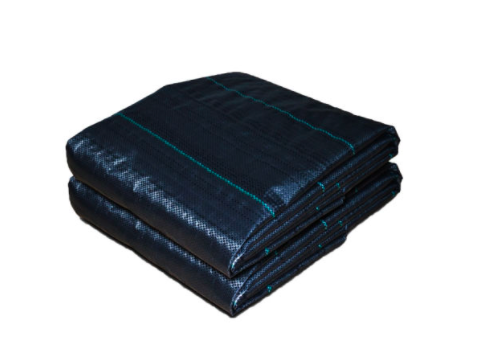- Understanding the Role of Geomembrane Liners in Waste Management
- Innovations in Geomembrane Liners for Water Management
- Geomembrane Liners: A Comprehensive Guide
- The Future of Geomembrane Liners in Civil Engineering
- Geomembrane Liners: Enhancing Landfill Stability
Manager:
WhatsApp:+86 177 0135 2670
Tel:+86 177 0135 2670
Email:marketing@okorder.com
Address:3rd Floor, No.2 Building, No.1 Sanlihe Road
The Versatile World of Geotextile Landscape Fabric: A Gardener’s Most Dependable Friend
There is a silent partner, aiding the gardener in realizing his dream of beautiful and flourishing landscapes — it is more than covering the soil. It is geotextile landscape fabric, which can be put to use in a variety of ways, for instance as an ally in horticulture as well as civil engineering. This article explores the various applications of Geotextiles, their advantages and how they subtly improve our relationship with the earth.
The Gardener's Canvas: Introduction to Geotextile Landscape Fabric
Imagine this; it’s an open space that awaits transformation. The first stroke on this canvas is not a plant or a stone but fabric – geotexitle landscape fabric! The fabric unveiled here isn’t just any other type, it was built to work with soil harmoniously by encouraging growth while preventing erosion and keeping things stable. This is where our gardens begin to grow and flourish and are a testimonial to human ingenuity when working with nature.
The Woven And Non-Woven Tales
Geotextile landscape fabrics come in two varieties – woven and nonwoven each having its own traits and uses. Woven ones are usually made from polypropylene, durable yet permeable allowing air, light and water to reach the ground beneath them. On the other hand, Non-woven fabrics, made from either polyester or polypropylene are mostly used for large scale hardscaping projects so that decorative materials do not sink down into soil.
A Walk through the Garden: Uses of Geotextile Landscape Fabric
When walking around a beautiful garden you may fail to see geotextiles but their influence will definitely be there on display. It plays that unsung role in ensuring that your garden looks perfect right from lush green lawns up to every well-arranged flower bed.

Weed Control and Soil Warmth
One of the main uses for geotextile landscape fabric is preventing weed growth. By blacking sunlight, it keeps undesirable plants from growing in your garden. Furthermore, it assists with soil warmth retention thereby promoting early germination as well as growth of desired plants.
Erosion Control and Soil Stabilization
Gardens on slopes or in areas prone to water runoff face the constant threat of erosion. Geotextile fabric acts as a shield against erosion which can wash away the soil. It’s the ability to stabilize soils that makes vegetation take root further securing the landscape.
The Civil Engineer's Toolkit: Beyond Gardening
Geotextile landscape fabric like any civil engineer tool is not only limited to gardening but also serves other purposes too. This material finds its application in road construction and large scale environmental projects where stability and durability are critical elements.
Infrastructure and Environmental Projects
In civil engineering, geotextile landscape fabric finds its use in separation and filtration. In weak soil conditions it helps strengthen soft soils making construction feasible within such areas. The drainage system will stay unblocked if water flows through while retaining particles that make up this type of soils.
The Art of Installation: Laying Down the Fabric
Laying this kind of geo-textile is itself an art. It must be well planned; executed so that it does what it was supposed to do effectively.
Preparation and Laying
Preparations are made before laying the fabric, which include clearing any debris from the ground and leveling the soil. After that, the fabric is unrolled, aligned carefully in place and secured. There should be overlaps to avoid having gaps and special pins or staples may be used to keep it in position.
Challenges and Solutions
During installation, there could be a number of challenges such as uneven surfaces or prevention of damage to the fabric. A solution would involve use of proper equipment, following best practices for installation and understanding project-specific requirements.
The Future of Geotextiles: Innovation and Sustainability
As we look towards our future, both gardening and civil engineering will see an increase in demand for geotextile landscape fabrics. Material science innovations coupled with increasing emphasis on sustainable practices have spurred development of new applications.
Sustainable Solutions
Geotextile landscape fabric contributes positively to environmental conservation efforts by harboring soil moisture hence reducing water consumption while minimizing disturbances inflicted on natural ecosystems. It also supports erosion control thus contributing to sustainability landscaping processes.
Innovations in Material and Application
Continuous research work done on geotextile technology promises new materials with superior characteristics e.g., improved strength, durability or other ecological benefits. For instance, various industries have found out different ways where these textiles could be applied in their practice.
In Conclusion: A Fabric Interwoven with Our Landscapes
A geotextile landscape fabric isn’t just a material but rather an integral part of how we interact with our environment. It speaks volumes about our ability to develop ideas that preserve our surroundings while adding value at all stages. This has enabled us to make stronger ties with nature using geotextiles which can last longer than others like roads built by humans do not deteriorate easily if properly maintained unlike most materials like asphalt cement or concrete slabbing which tend wear out quickly due exposure cold ice storms heavy traffic volumes. So, the next time you walk through a garden or admire a well-constructed road, remember the fabric that lies beneath, quietly supporting the beauty and functionality of our landscapes.
- Previous:Reinforcement Art: Woven and Non-Woven Geotextiles
- Next:The Weave of the Earth: The Legacy of Northwest Linings and Geotextiles in Landscaping and Beyond.






